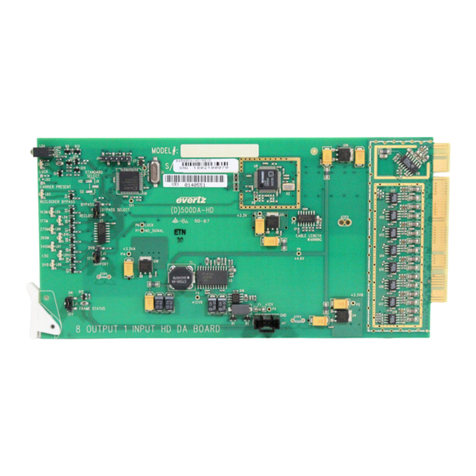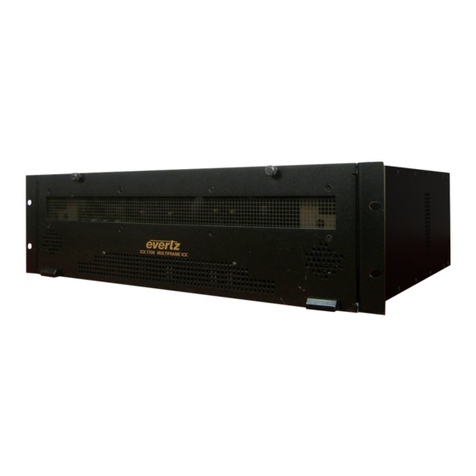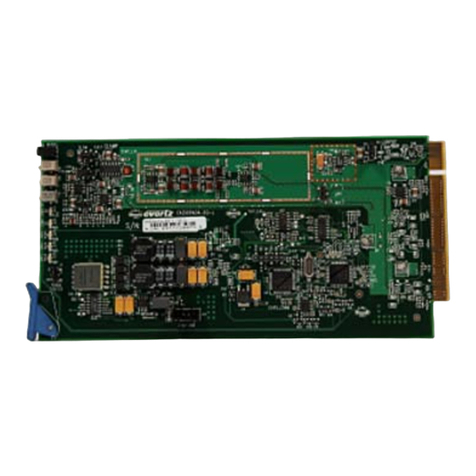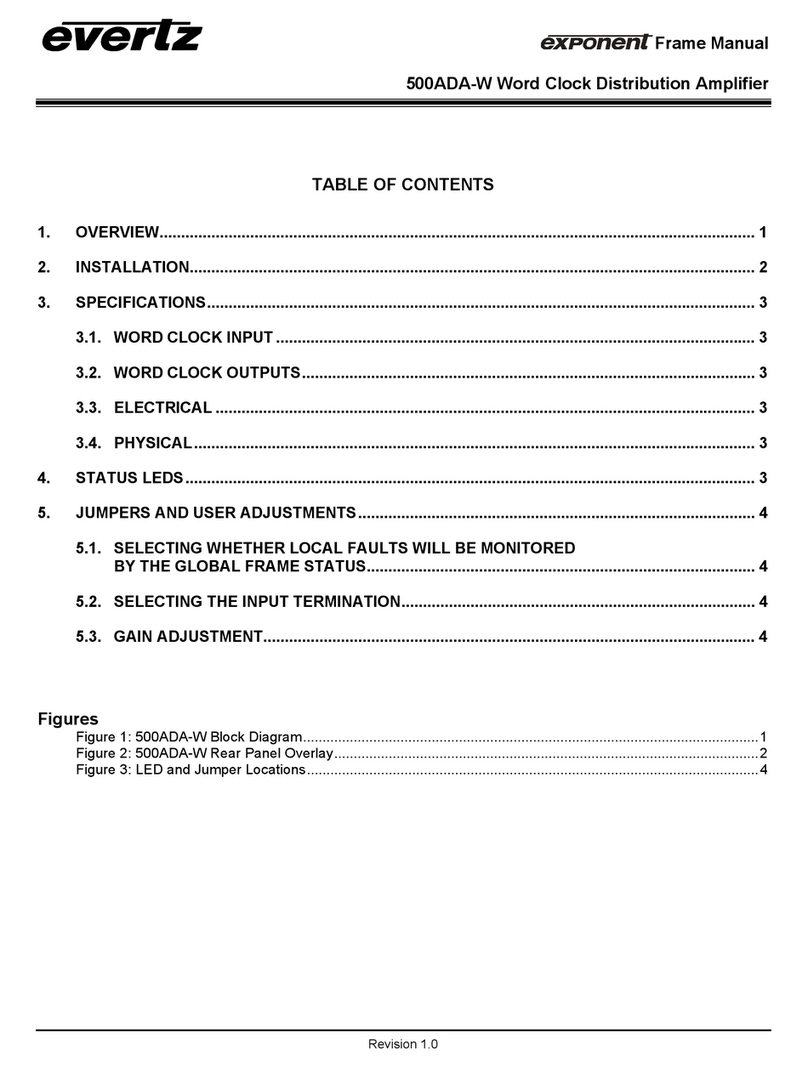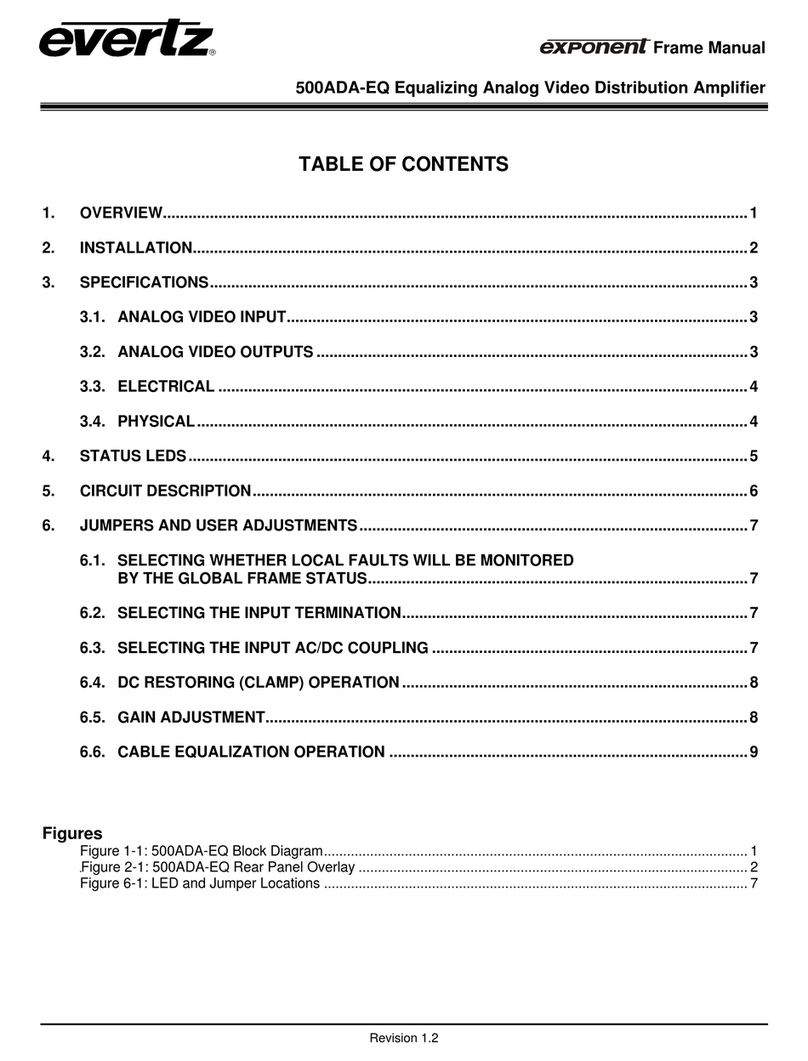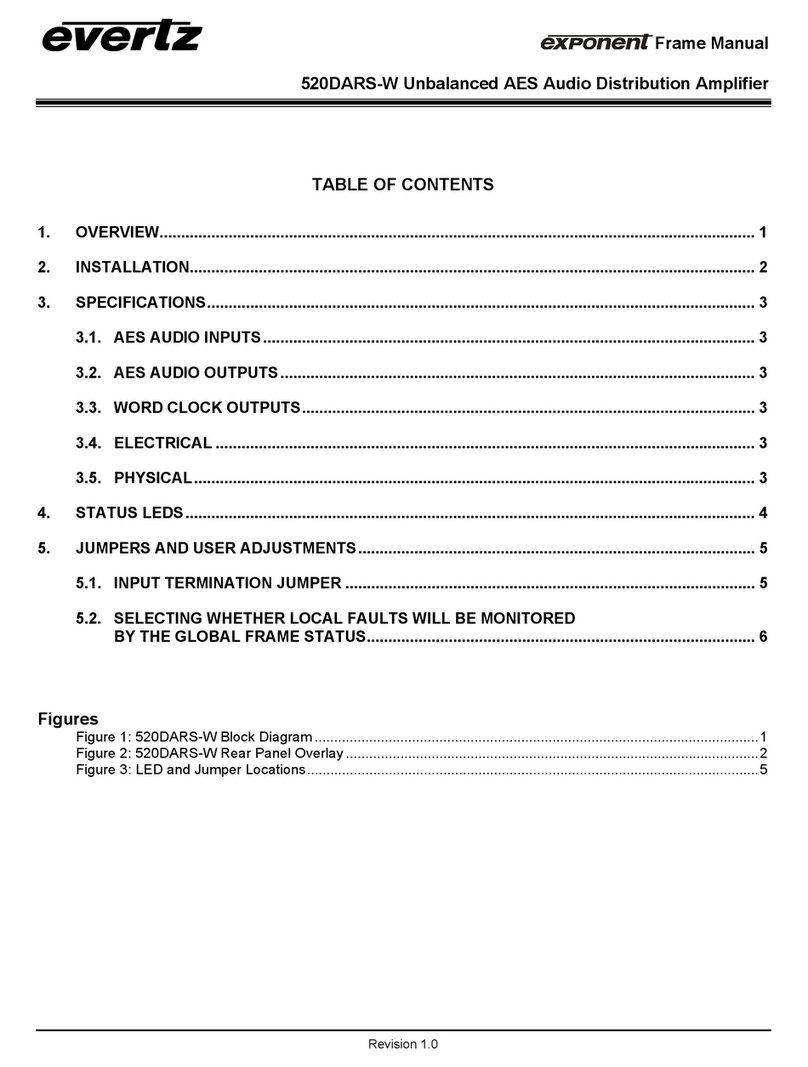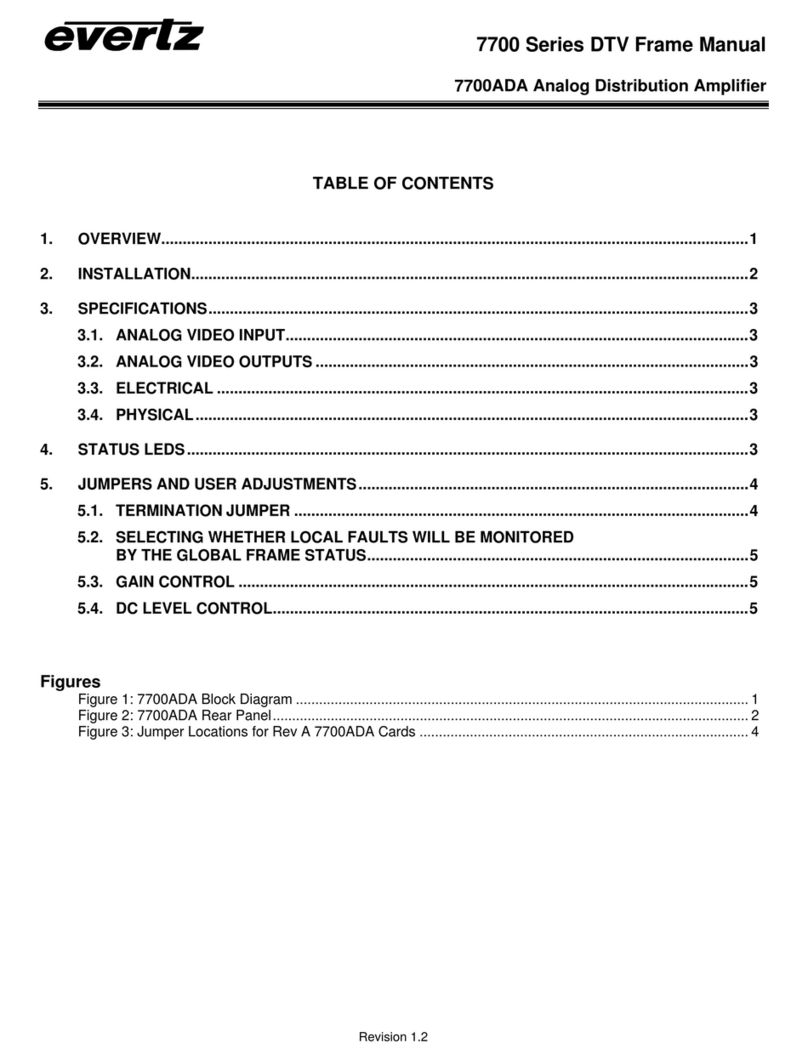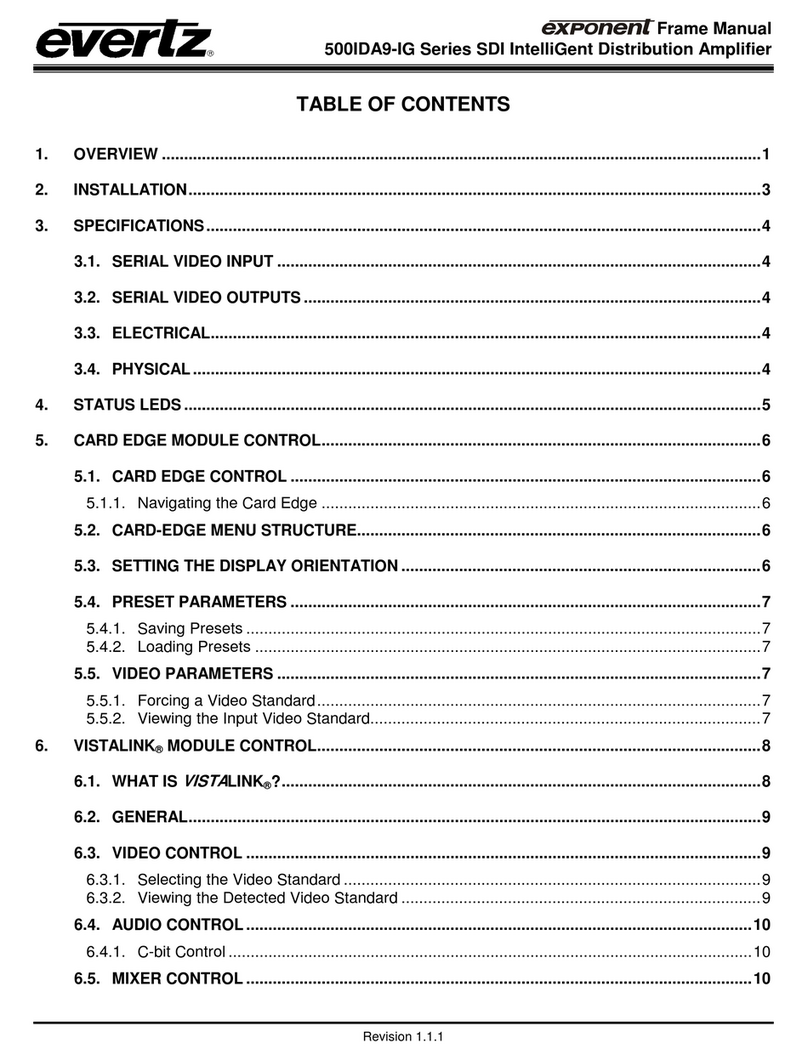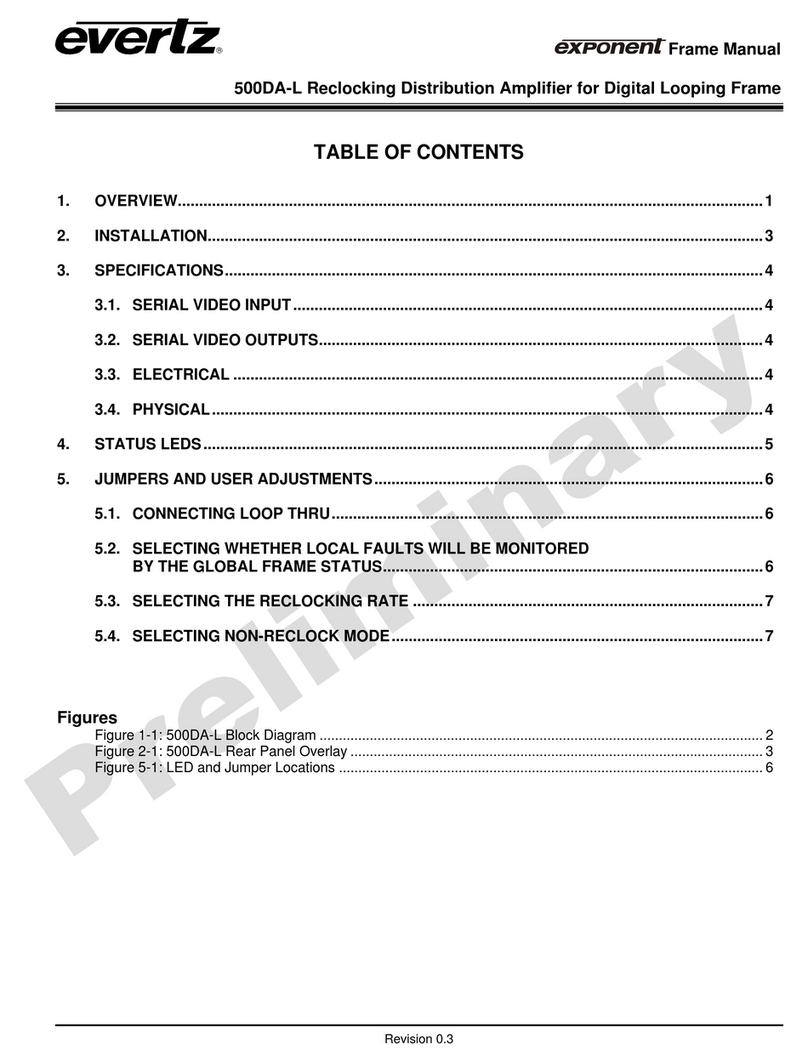
7700 Multiframe Manual
7700ADA-EQ Equalizing Analog Video Distribution Amplifier
6.1. SELECTING WHETHER LOCAL FAULTS WILL BE MONITORED
BY THE GLOBAL FRAME STATUS
The FRAME STATUS jumper J1, located at the front of the module determines whether local faults (as
shown by the Local Fault indicator) will be connected to the 7700FR frame's global status bus.
FRAME STATUS: To monitor faults on this module with the frame status indicators (on the power
supply’s FRAME STATUS LED's and on the Frame's Fault Tally output) install this
jumper in the On position.
When this jumper is installed in the Off position local faults on this module will not
be monitored.
6.2. SELECTING THE INPUT TERMINATION
The input termination may be set via card jumper J5 to either 75 Ohms (default) or Hi-Z (34k Ohms). Set it
to Hi-Z when using a "T" connector to loop the signal through several device inputs.
6.3. SELECTING THE INPUT AC/DC COUPLING
The input may be AC or DC (default) coupled into the input-circuitry using jumper J4. Use AC coupling in
applications when the input signal has a large (>2V) DC level. In some non-video applications that do not
have DC information (i.e. digital AES audio), AC coupling can be used to remove any DC level that may
have built up in its transmission. The DC Restoring (clamp) circuitry will work with either AC or DC
coupling in video applications.
6.4. DC RESTORING (CLAMP) OPERATION
A clamp pulse is generated from the sync information and a clamp signal is delivered to a DC restorer
circuit that positions the blanking level to ground. This feature will work with standard definition analog
NTSC and PAL-B sync structures. Analog tri-level sync 1125-line high definition video (SMPTE 240M) will
also be detected and DC restored. In addition, most versions of bi-level sync that has been applied to
1125-line high definition video will be supported.
!
The clamp position and size will successfully DC restore HD signals with bi-level
sync generated by Evertz DACs for applications with computer monitors. Other
manufacturers DACs may not have the same sync size and the DC restoring may
not work with these signals.
The clamp action can be enabled with a jumper, the time-constant of the clamping action may be fast or
slow and the DC level may be set with a card edge POT. For non-video, applications disable the clamp
with the jumper (J7). For removing low frequency distortions (<1kHz) from clean video, use the clamp
time-constant (J8) in the FAST position. If the video has a sizeable amount of noise (i.e. a low quality off-
air signal) the fast clamp will generate a line-to-line level distortion (also called "piano-keying") because of
the noise. In this situation, use the SLOW clamp position of (J8). The CLAMP LEVEL POT on the card
front edge allows you to adjust the DC level that the back porch is being clamped to. This allows you to set
the output DC level to values other than back porch to ground.
7700ADA-EQ-6 Revision 1.0








